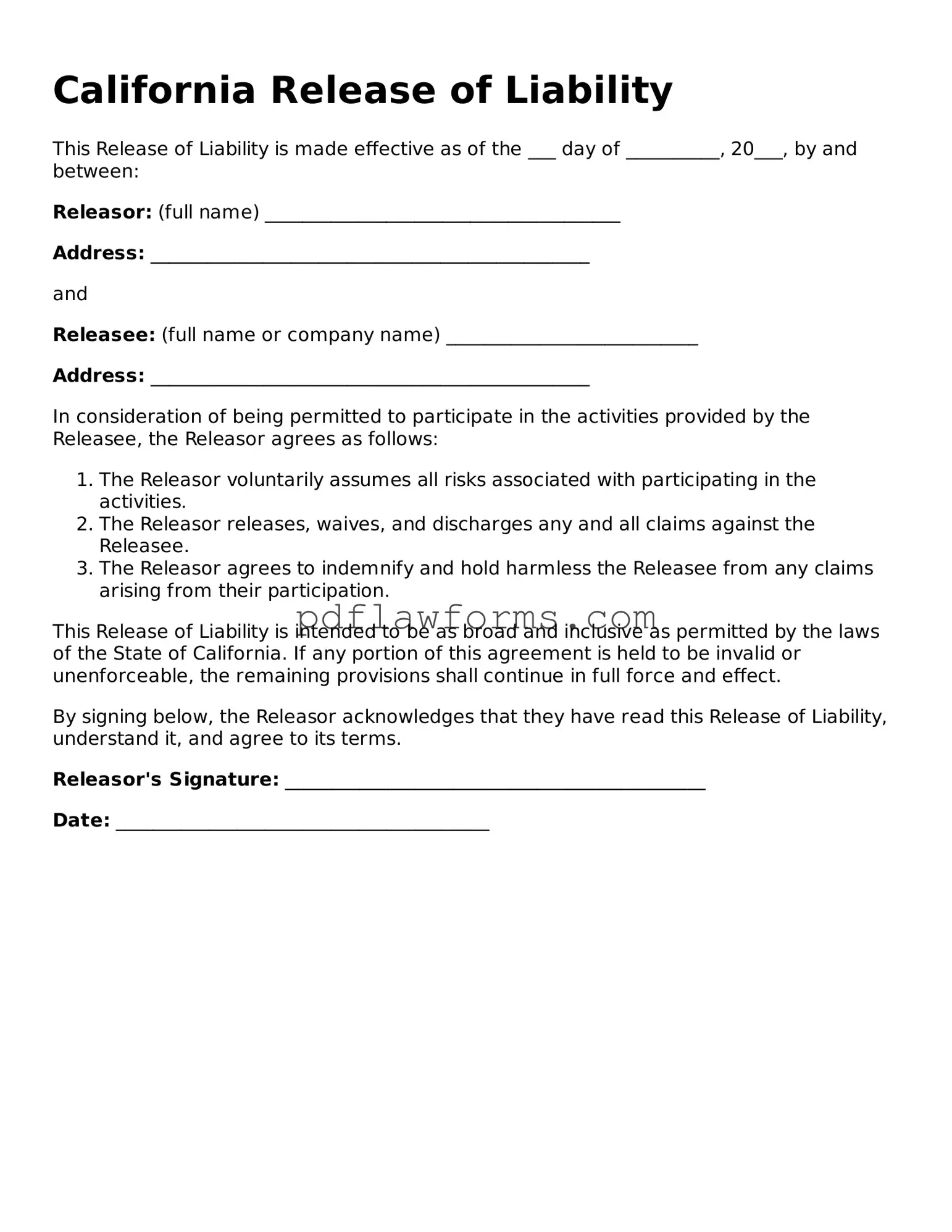Release of Liability Form for the State of California
The California Release of Liability form is a legal document designed to protect businesses and individuals from claims resulting from injuries or damages that may occur during an activity. By signing this form, participants acknowledge the risks involved and agree not to hold the organizers responsible. Understanding this form is crucial for anyone engaging in recreational activities, so consider filling it out by clicking the button below.
Make My Document Online
